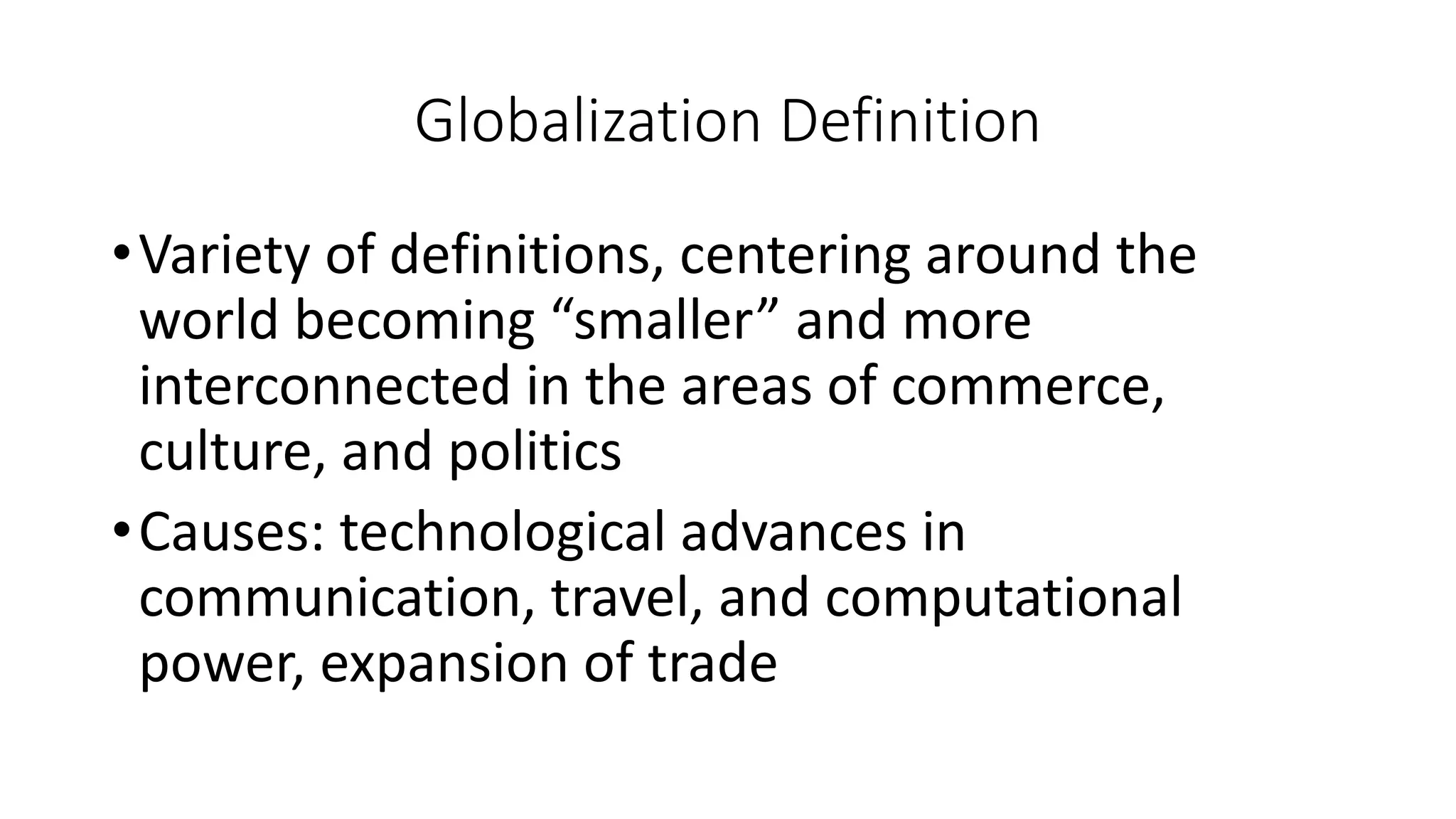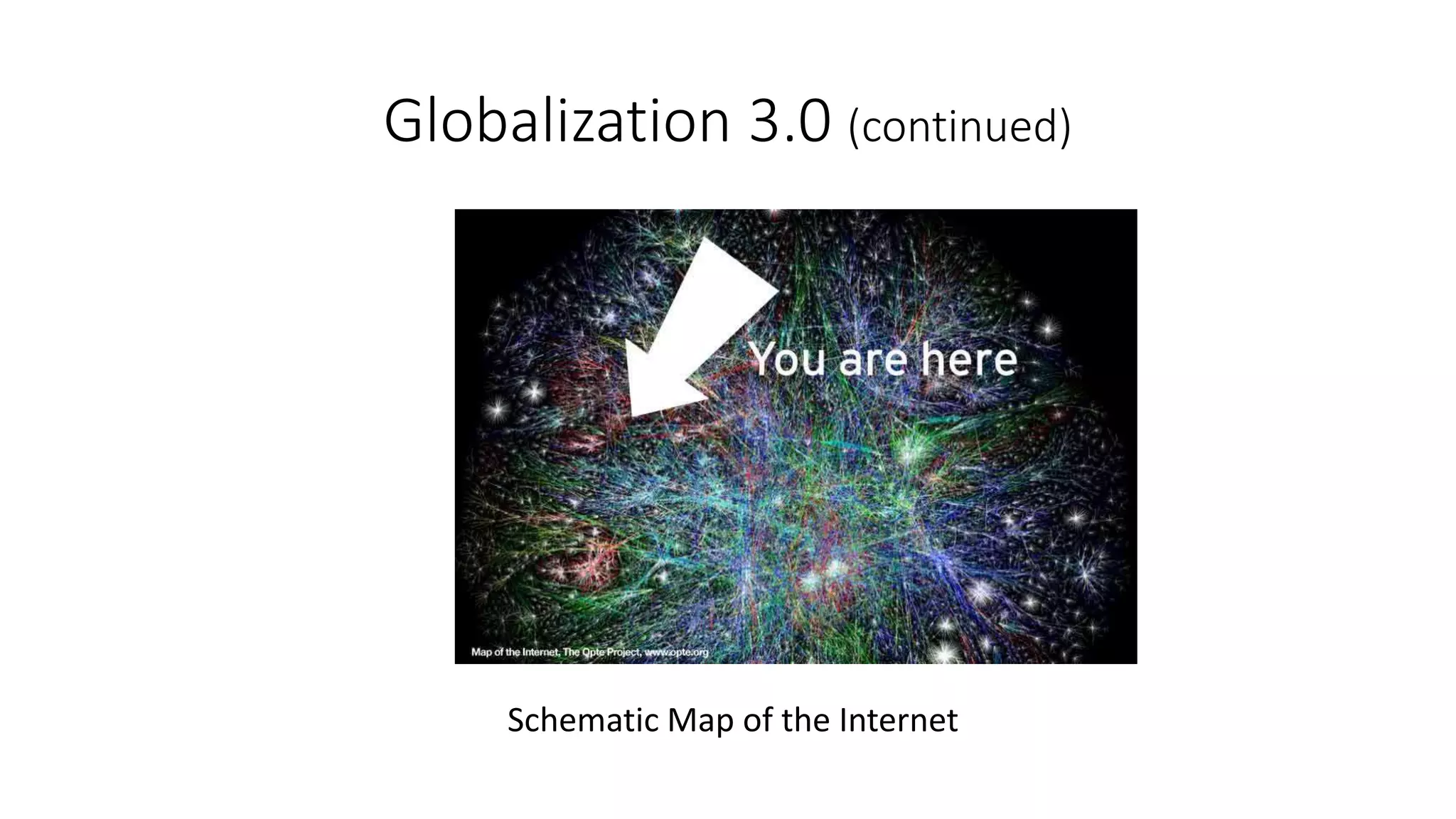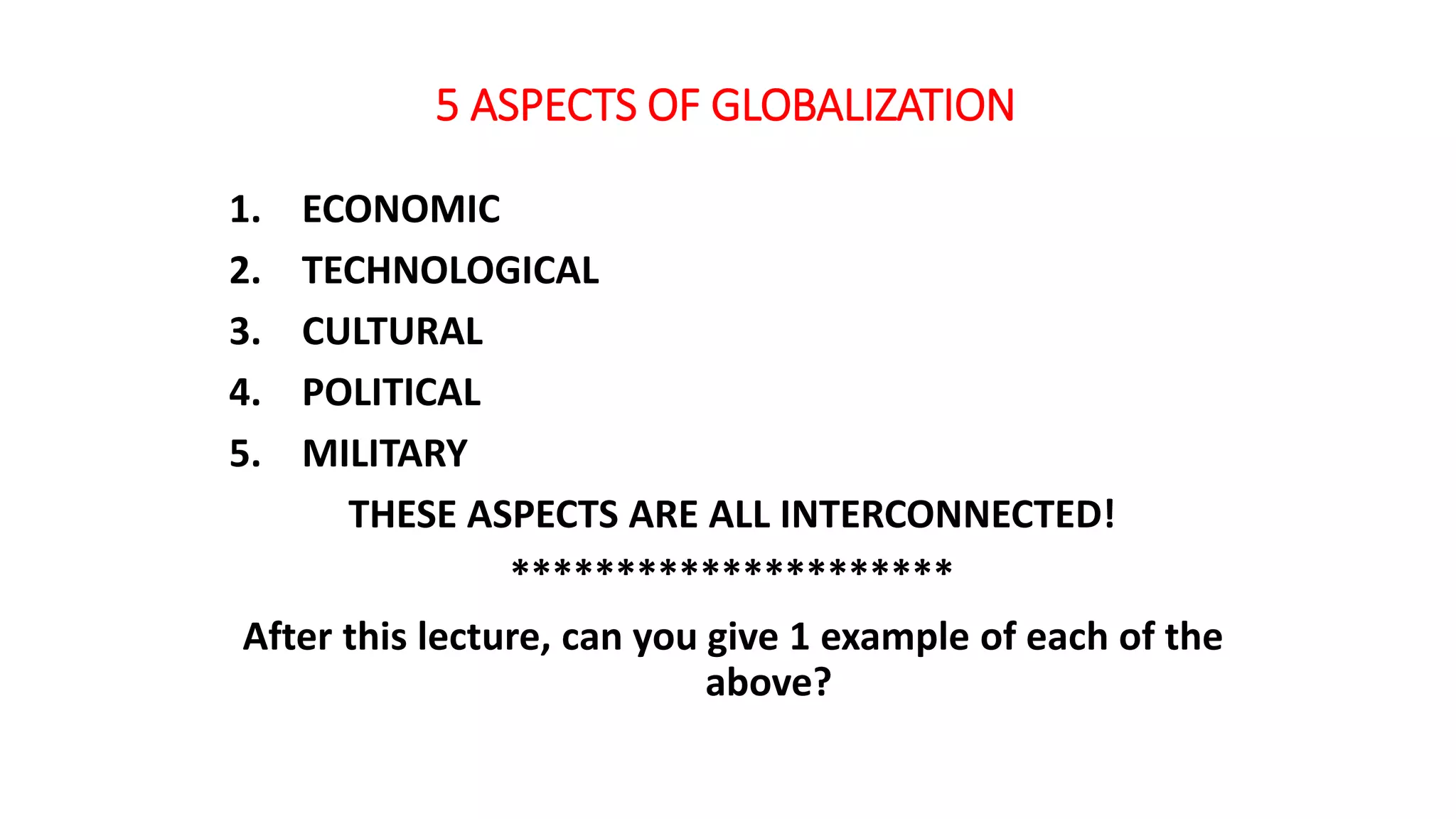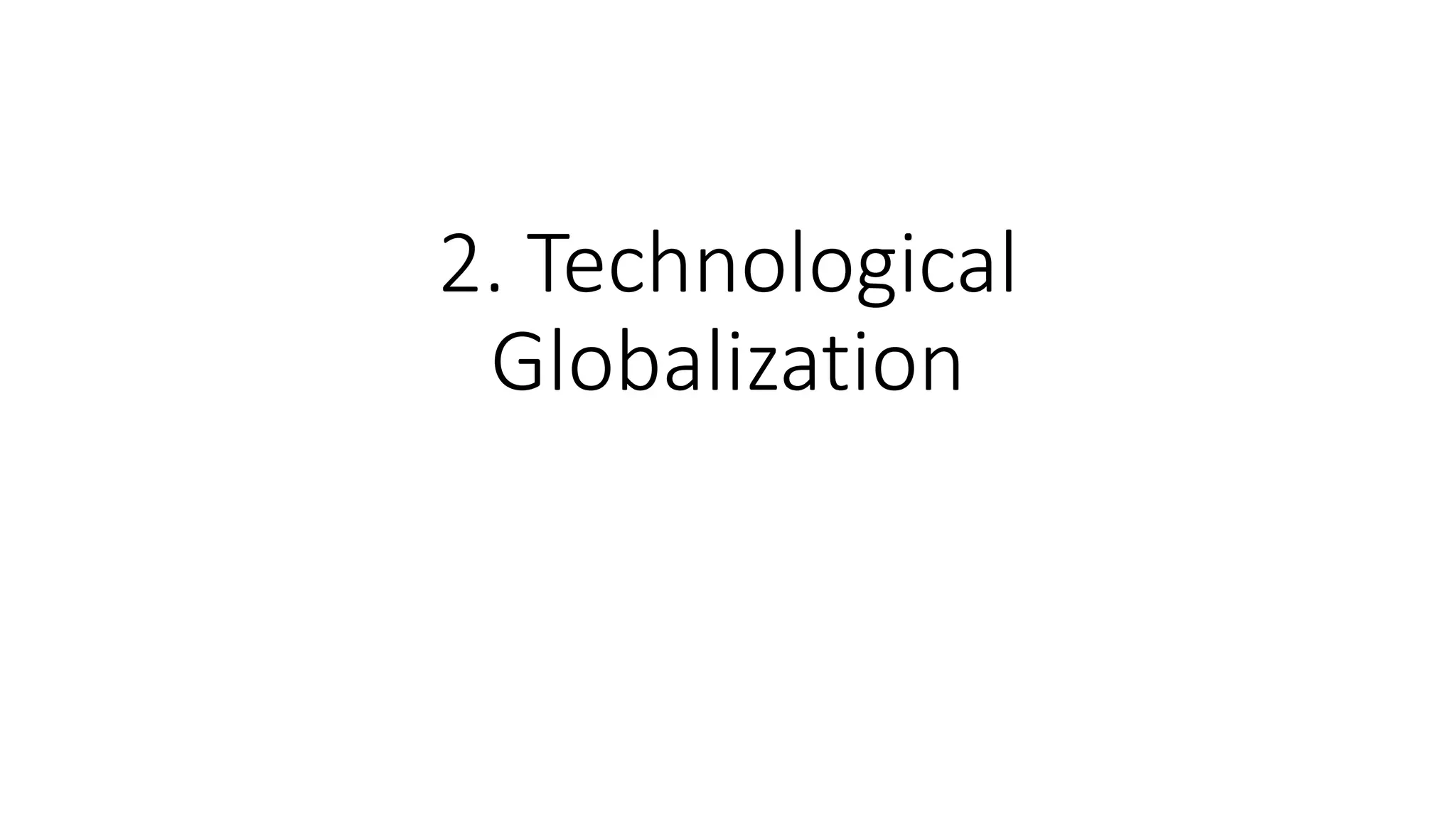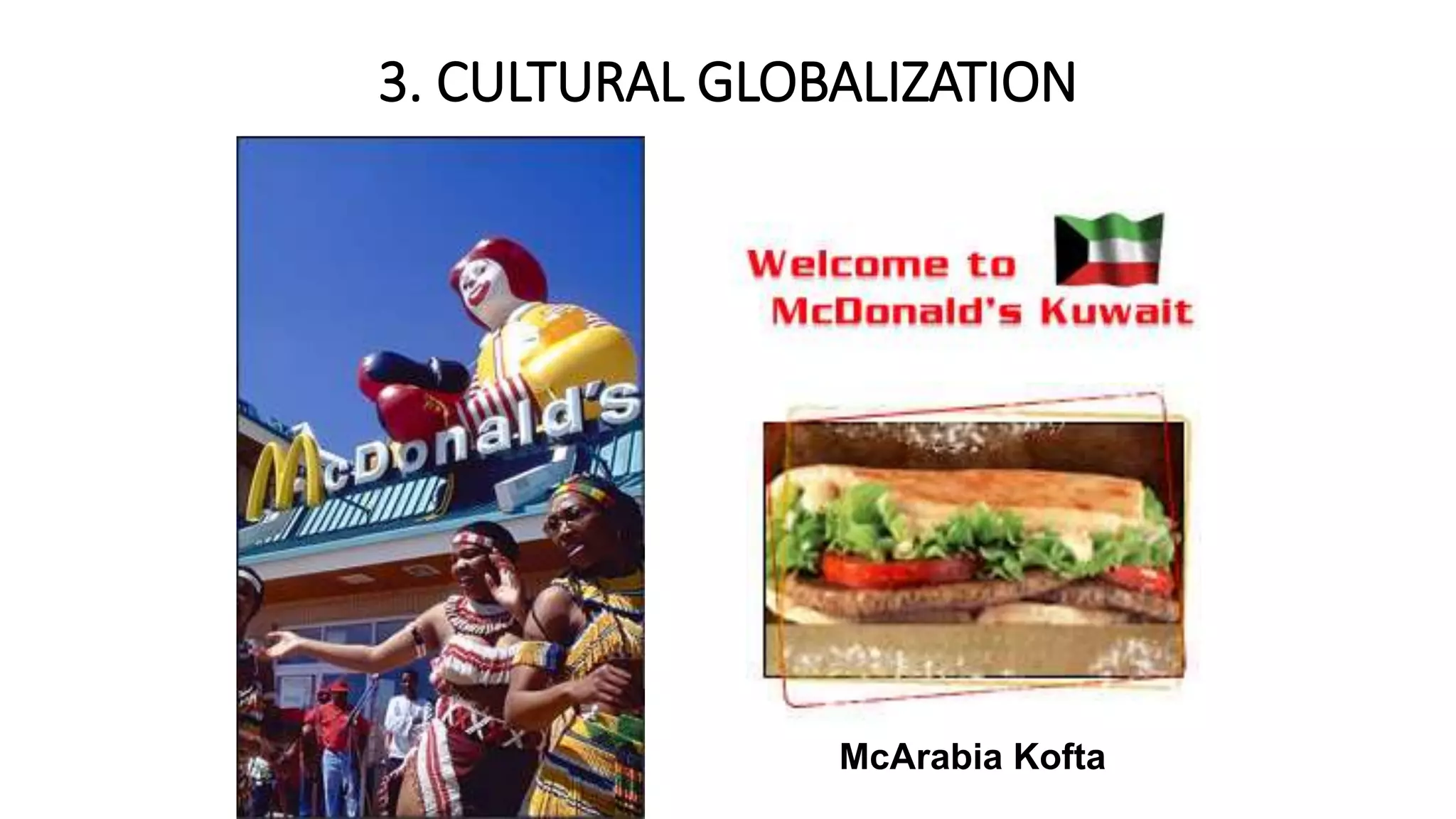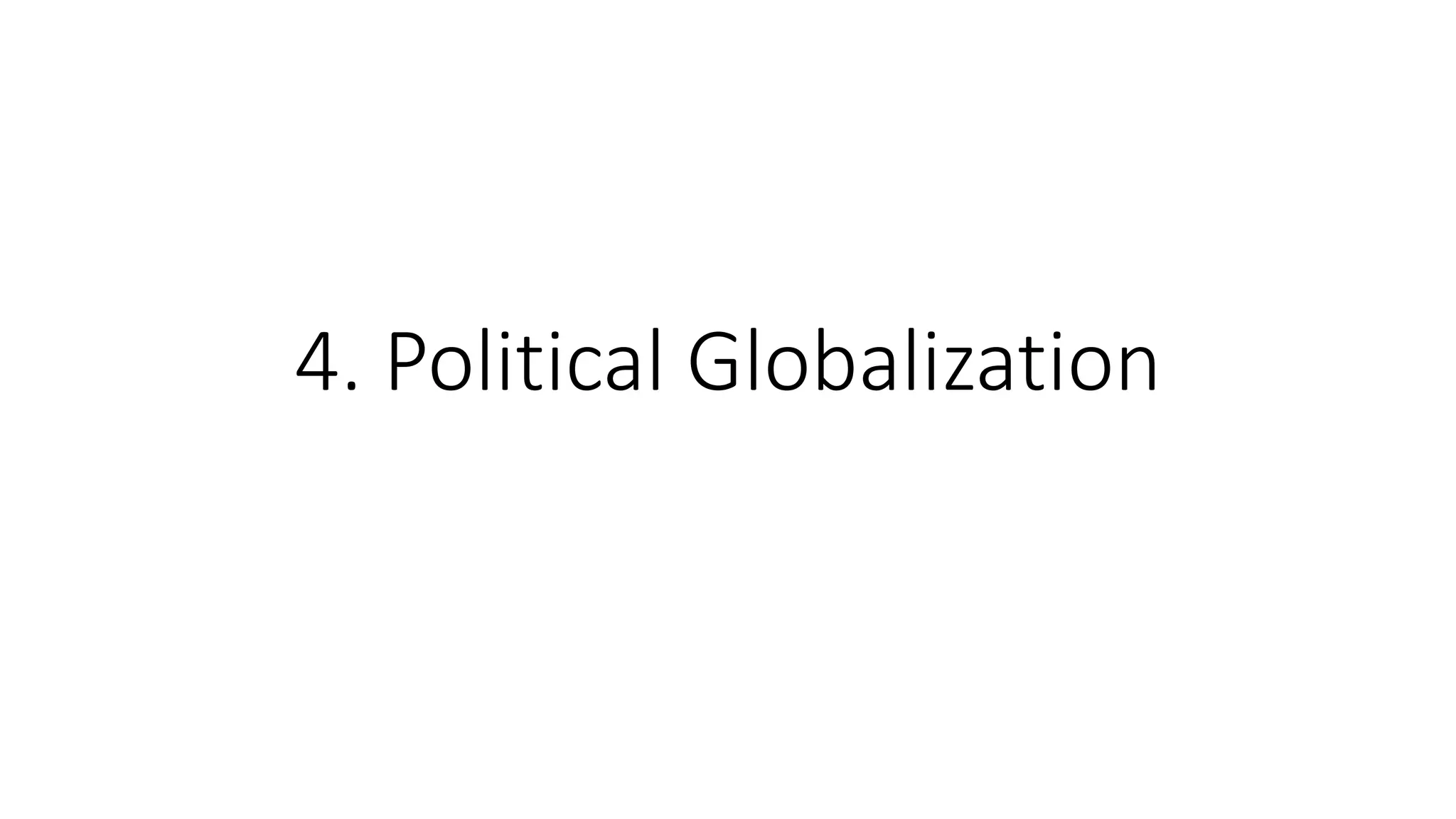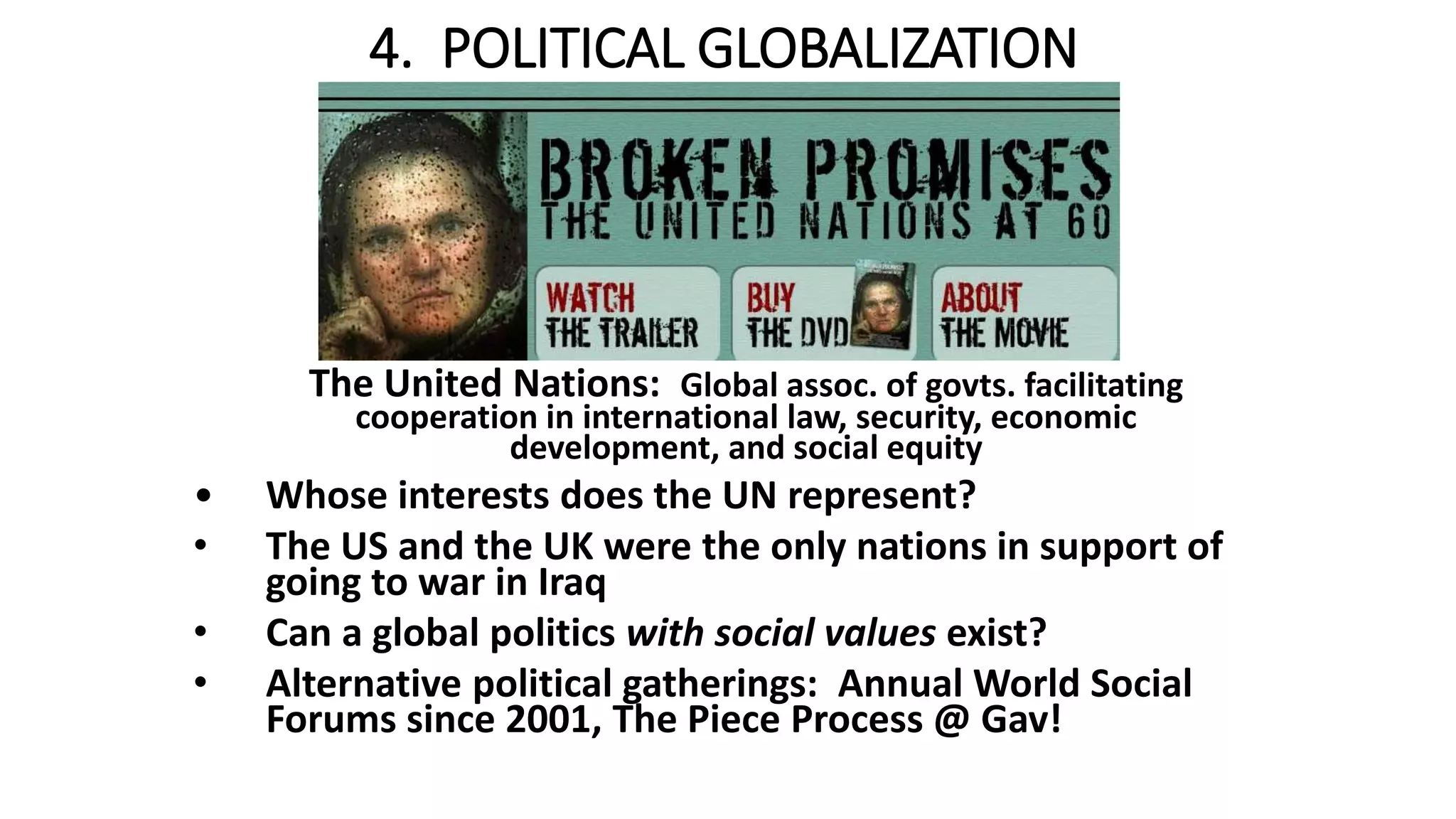This document provides an overview of contemporary globalization and its key aspects, including:
- Economic globalization and the increasing interconnectedness of economies through trade organizations like NAFTA and the WTO.
- Technological globalization driven by advances in communication technologies.
- Cultural globalization and the spread of Western culture through multinational corporations.
- Political globalization represented by institutions like the United Nations.
- Military globalization and the role of global alliances.
It also discusses theories of globalization's effects from scholars like Friedman and potential consequences such as environmental damage, labor exploitation, and the erosion of traditional cultures.

















